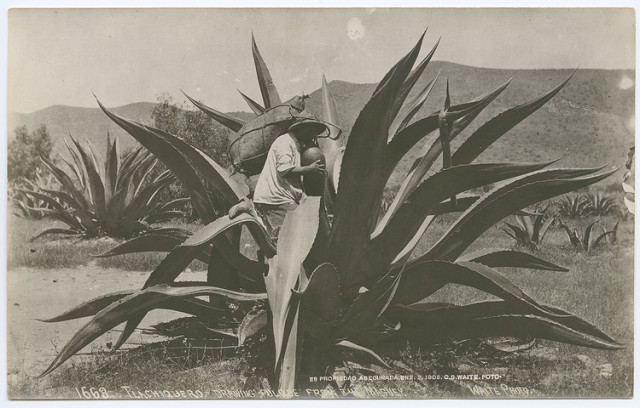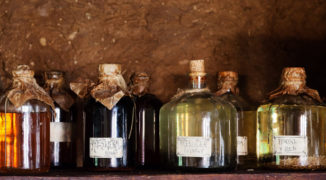The origin story behind most spirits begins with a legend. Some are more fanciful than others but none are as mythical as that of tequila, or rather, its ancient predecessor, pulque.
Pulque dates back to around 300 A.D. It is the fermented sap of the maguey agave plant which grows indigenously throughout central Mexico’s rocky and sandy plains. Maguey was worshipped by the Aztecs for its wide-ranging medicinal properties, which are said to have been bestowed upon the flowering desert plant by the culture’s gods. This included its use as a fertility drug. The sap they extracted from the plant and then fermented was also considered a serious aphrodisiac. The Aztecs also found that pulque was quite effective in ritual sacrifices, as it helped the victim clear their mind while it numbed their body before the inevitable knife drop. Pulque was considered the drink of (and a gift from) the gods and therefore was not to be taken or sipped lightly.
The legend most associated with pulque and the maguey involves an angry goddess, a flying serpent, and a damsel in distress.
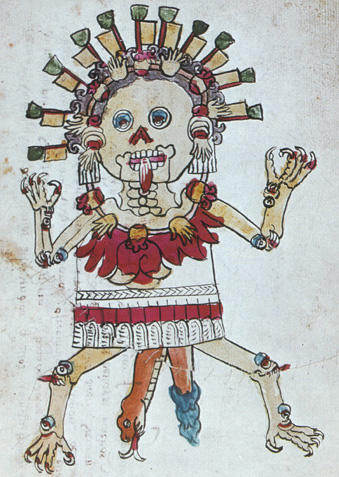
Tzitzimitl (pictured left) was an angry skeletal goddess of the sky. She kept the Earth dark — only permitting intermittent light with each human sacrifice she received in her name. Hoping to put an end to her evil doings and bring back the light, a “feathered serpent” named Quetzalcoatl flew up to the sky to confront Tzitzimitl. Upon his arrival, he became enamored with her imprisoned granddaughter Mayahuel. The two escaped to earth where they disguised themselves as trees. Enraged by this betrayal, Tzitzimitl searched and ultimately found the pair and ordered their deaths. Mayahuel was torn apart. A wounded Quetzalcoatl gathered her remains and buried them. The maguey grew from this spot and contained sap which soothed and comforted the grieving Quetzalcoatl. It is said Mayahuel was granted goddess status and became the patroness of fertility for the life-giving elixir which seeped from her 400 breasts in order to feed her 400 sons.
Regardless of the legendary origins of pulque, the Aztec people revered both the fermented mixture and the maguey centuries before the Moors and then the Spanish arrived on the continent and conquered the land. Few dispute, however, that pulque was the mother of what we now know as tequila.
When the Spanish arrived in Mexico in 1519, they found the taste of the viscous pulque appalling. The brandy they brought with them eventually ran out, leaving the conquistadors with no other choice but to distill their own by whatever means necessary. The Spanish found that fermented agave when distilled (first using clay pot stills) made for excellent wine. Mezcal wine became the conquistadors’ drink of choice. The clay still was later replaced with those made of copper.
The native people, however, still prefered pulque to the conquerors’ mezcal wine.
Spirits enthusiasts and researchers have begun to poke holes in the popular theories long held as truths of tequila’s beginnings. This includes the belief that the Spanish were the first to distill fermented agave. Archaeologists have found evidence of native people distilling mezcal long before the Spanish arrived. And, even after their arrival, many of the privately owned haciendas around Jalisco were distilling their own mezcal wines in hopes of avoiding being taxed by the Spanish crown. There is reason to believe these plantation owners, along with a pack of traveling salesmen astride donkeys, not the conquistadors, were responsible for the spread of mezcal wine and eventually tequila throughout Mexico.
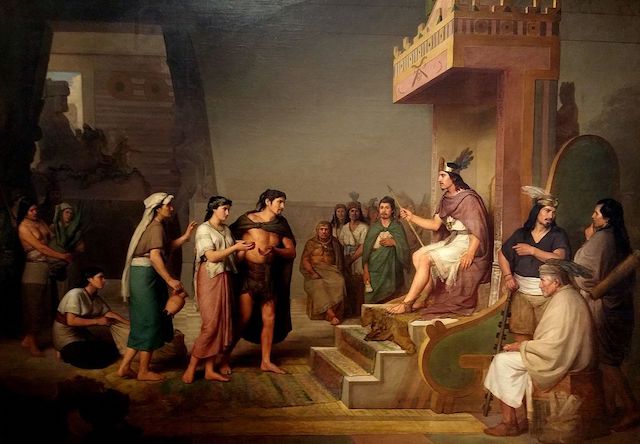
“The discovery of pulque” by nineteenth century Mexican painter José Obregón.
From here the picture surrounding tequila becomes clearer and facts much easier to check. In 1758, Don Jose Antonio de Cuervo was given a land grant near Tequila, Jalisco by King Ferdinand VI. Cuervo began distilling what would become known as tequila. In 1795, his son, Jose María Guadalupe, was responsible for the first commercial sale of tequila. It is the year many consider to be the birth of the spirit which is named for the town.
However, tequila did not leave Mexico and gain international fame until after 1821 when the Mexican people declared their independence from the Spanish. The spirit arrived in America in 1873. Don Cenobio Sauza (considered the “father of tequila”) is said to have identified the Weber Blue agave plant as best for making tequila sometime in the 1890s. This pivotal find led to tequila being officially defined and set apart from other agave-based spirits like mezcal in 1902.
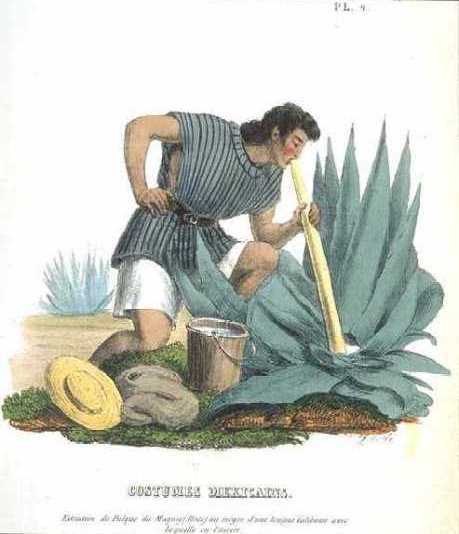 Fast-forward to 1974 when Mexico declared the word “tequila” as intellectual property of the country. In 1978, Mexico went a step further when tequila became regulated through the Appellation of Origin. The mandate sets forth strict production standards, including where the spirit can be distilled, to officially be considered a tequila. All 124 Jalisco municipalities are included in the standard, as are 56 others within Guanajuato, Nayarit, Michoacán, and Tamaulipas.
Fast-forward to 1974 when Mexico declared the word “tequila” as intellectual property of the country. In 1978, Mexico went a step further when tequila became regulated through the Appellation of Origin. The mandate sets forth strict production standards, including where the spirit can be distilled, to officially be considered a tequila. All 124 Jalisco municipalities are included in the standard, as are 56 others within Guanajuato, Nayarit, Michoacán, and Tamaulipas.
Today, the nonprofit organization Consejo Regulador del Tequila (which is sanctioned by the Mexican government) monitors the industry closely to promote best practices. This includes the treatment of laborers, proper agave growth, research, and the fostering of ancient tequila-making traditions. With more than 1,300 tequila labels and 180 municipalities to oversee, this is no easy task, but it is one Mexico and her people have fully embraced to ensure the spirit’s future.


